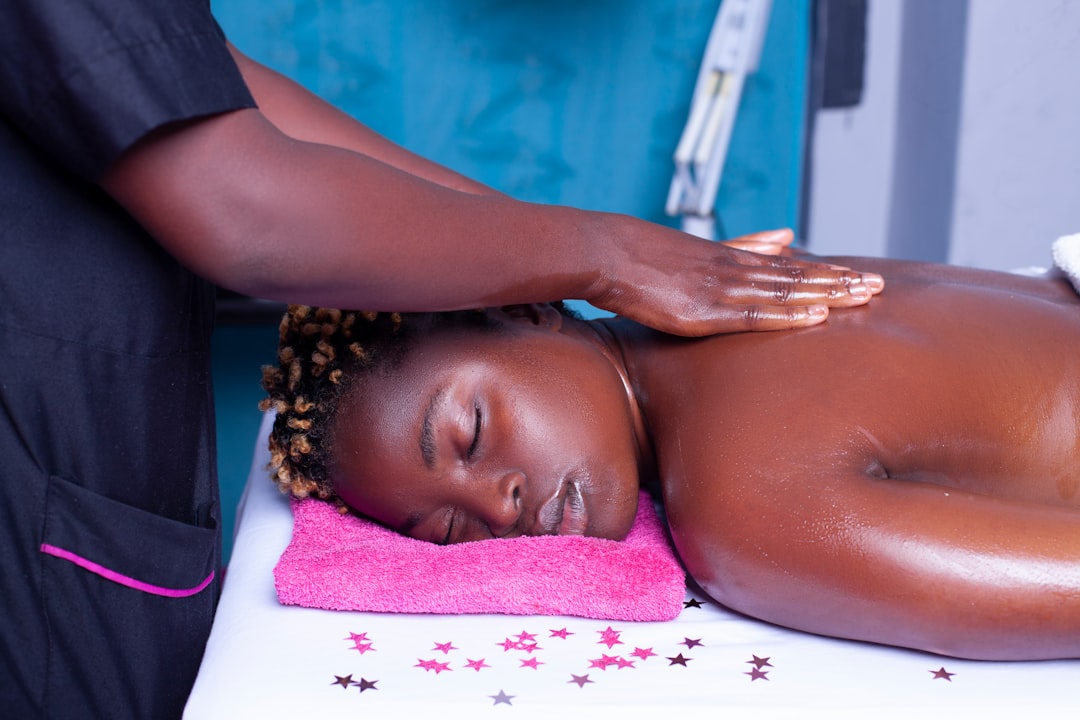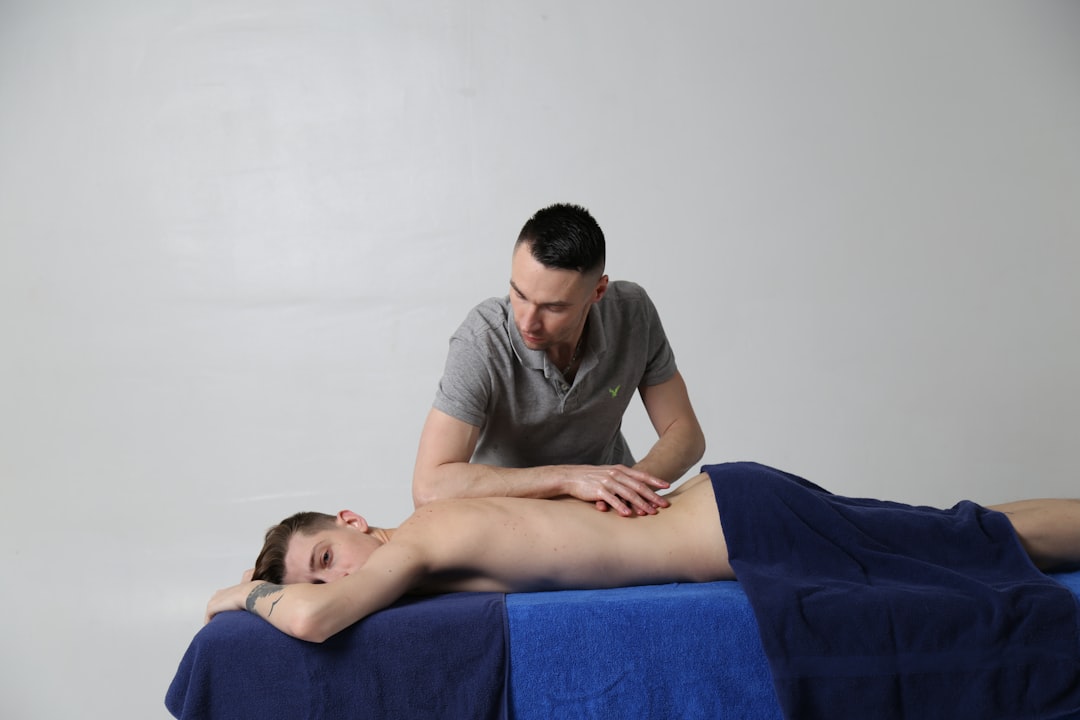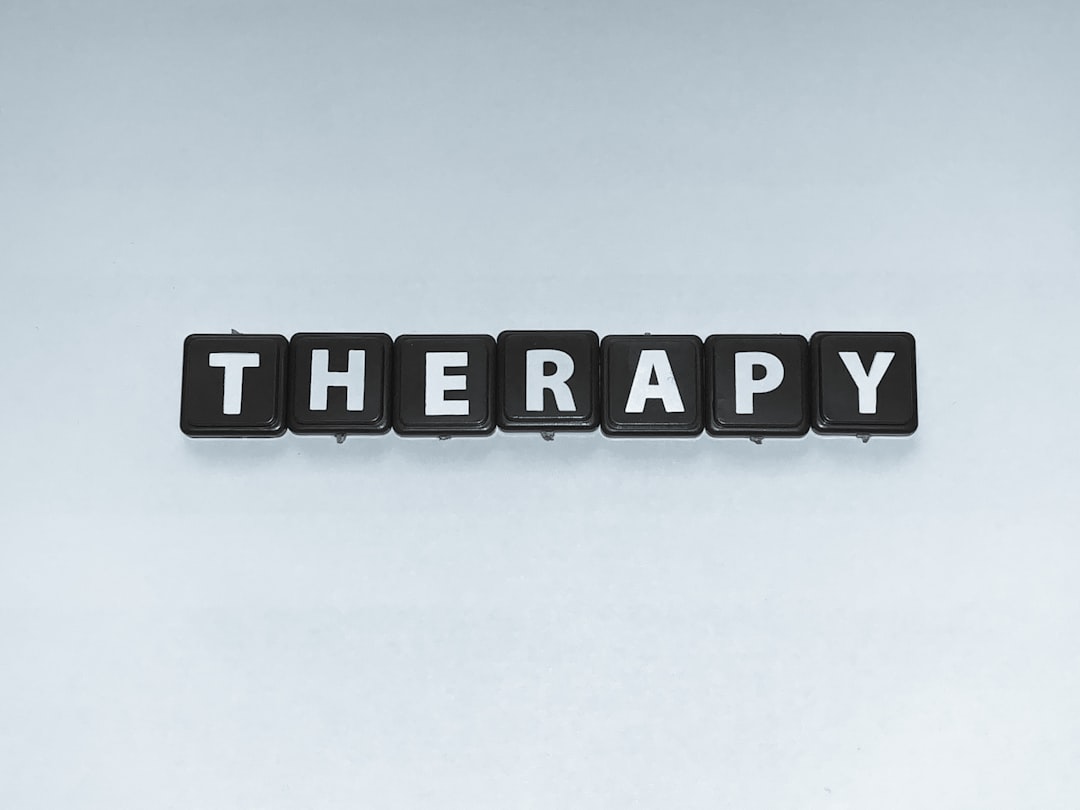

Engage prospects with a scan and streamline customer engagement with FREE QR code marketing tools by Sona – no strings attached!
Create a Free QR CodeFree consultation

No commitment

Engage prospects with a scan and streamline customer engagement with FREE QR code marketing tools by Sona – no strings attached!
Create a Free QR CodeFree consultation

No commitment
In today’s digitally driven world, QR codes have evolved from a novelty to a strategic powerhouse in bridging offline engagement with online action. For massage therapy schools, QR codes in education represent a seamless, scalable, and effective way to gather feedback, streamline administrative processes, and enhance student and prospect engagement. These tools address the critical needs of schools facing low survey response rates, manual administrative burdens, and limited insight into what students and prospects really want, all without requiring an app download or complex technical setup.
As prospective students navigate school brochures, appointment cards, and printed course materials, they encounter key decision points that shape their journey through massage therapy education. Yet, traditional forms often miss these moments and valuable feedback slips through the cracks. By embedding QR codes at these physical touchpoints, schools can instantly collect actionable input, reduce friction in the inquiry-to-enrollment cycle, and create more responsive educational environments, as seen in practitioner-focused massage QR marketing.
This article explores purposeful strategies for deploying QR codes in massage therapy schools, showing how these tools address gaps in feedback collection and support broader goals such as optimizing curriculum, minimizing missed engagement opportunities, and driving higher rates of student program completion.

Many massage therapy schools face the frustration of missed feedback and stale data when relying on paper surveys or untracked digital tools. Students who are time-pressed or fatigued after hands-on classes often skip forms or forget to return printed materials, which causes essential input to go uncollected. QR codes bridge the gap between the physical campus experience and digital improvement tools by making it effortless to scan and respond from a phone in seconds. When you digitize touchpoints like paper surveys, class sign-in sheets, clinic appointment cards, and event flyers, you convert once-invisible interactions into measurable insights using Google Forms QR.
Replacing analog processes with QR-first workflows reduces friction and improves data quality. Paper evaluation forms are often misplaced and inherently lag real-time needs. A QR survey posted near the lab exit or included in a clinic receipt captures impressions while the experience is fresh. Similarly, sign-in sheets for guest lectures or open houses can become QR-based check-ins that identify high-intent prospects and trigger immediate follow-ups from admissions via name badges. This shift removes manual data entry, cuts error rates, and reduces staff time spent collecting and compiling results.
To get started, prioritize the touchpoints with the highest impact on student experience and enrollment outcomes. Classroom doors, clinic checkout counters, and admissions one-pagers are prime locations where a quick scan can capture sentiment or intent with almost no added effort. Pair each QR code with a benefit-focused call to action, for example, “Scan to rate today’s lab in 30 seconds” or “Scan to get a personalized tour follow-up.”
When effectively implemented, QR-based systems help massage therapy schools turn formerly invisible or incomplete data into actionable insights that directly improve engagement, curriculum relevance, and student satisfaction.

Massage therapy schools often struggle to understand which students or prospects are engaged, what prospective learners are comparing, or how alumni perceive career readiness. Many of these touchpoints happen offline: a brochure picked up at a career fair, a clinic visit, or a conversation during a campus tour. Traditional paper forms produce low participation and provide minimal context. Generic website analytics show page views but not who engaged or why. QR codes solve these offline-to-online gaps by turning every physical surface into a digital entry point with measurable signals, strengthening overall marketing.
Speed and simplicity matter in this environment. No one wants to download an app to leave a quick comment about an instructor or to request more information about scholarships. A one-scan experience lowers barriers and captures participation in the moment. Dynamic QR codes are particularly useful because they allow you to update the destination based on program changes, event schedules, or seasonal promotions without reprinting materials. With a QR platform like Sona QR, teams can edit links post-print, track scans by location and time, and view dashboards that reveal what content resonates.
Put simply, QR codes convert awareness and interest into actions that improve operations and outcomes. They also give you a clearer picture of what is working in your marketing and student experience, so resources go to the tactics that actually move the needle.

Not all QR codes serve the same purpose, and choosing the right format amplifies results. Massage therapy schools typically benefit from formats that drive to forms, information pages, and contact capture, while also supporting quick staff interactions during tours and events. The most valuable codes are usually dynamic, which means you can change the destination later and view analytics about scans.
Dynamic QR codes stand out because they provide version control and tracking. A poster that once promoted “Spring Open House” can be retargeted to “Summer Enrollment Checklist” after the event. Sona QR’s product overview makes it easy to manage a library of codes, update destinations in seconds, and report performance by media type, program, and cohort.
Growth opportunities are often hiding in plain sight where students, prospects, and alumni naturally interact with your brand. The key is to place QR codes at decision points and moments of high motivation. A prospective student considering enrollment during a campus tour is more likely to scan a “Get scholarship info” QR than to remember a URL later. A clinic client who just received an exceptional student massage is primed to leave a glowing review if the QR code sits on the receipt or tabletop sign.
To maximize insights and conversions, map your buyer and student journeys and layer QR codes where momentum already exists. Prioritize visibility, relevance, and timing. Use larger codes for posters seen from a distance, and pair each code with a short, benefit-focused CTA. Ensure that staff and student ambassadors know how to reference the codes and invite scans during interactions. For broader ideas on audience engagement, explore these marketing strategies.
By positioning QR codes where motivation already exists, schools reduce friction, increase participation, and capture signals that would otherwise remain invisible. The outcome is a more reliable pipeline of leads, timely feedback for instruction, and stronger relationships with alumni who can support referrals and job placements.

The most effective QR code programs solve specific problems with clear, measurable outcomes. In massage therapy schools, the highest-impact use cases often relate to feedback, lead capture, and service experience. Well-designed flows convert brief offline moments into data and actions that matter.
Each use case can be measured by scan volume, completion rates, and downstream actions like bookings or applications. With Sona QR, teams can tag each code by placement and purpose, then compare performance to identify the strongest channels and messages.
Many schools struggle to segment outreach because high-intent prospects remain anonymous if they never fill out a form. A QR scan is both a micro-conversion and a signal of intent. When you deploy unique codes across your physical assets, you can infer where someone was, what they saw, and what they cared about. This context supports better segmentation and more personalized follow-up.
Create a simple funnel map and assign different QR codes to awareness, consideration, and conversion touchpoints. Each scan becomes a data point that feeds a segmented audience, enabling tailored email or SMS sequences and custom ad audiences. Sona QR can sync these segments to HubSpot, Salesforce, and Meta Ads, so your admissions team sees alerts in real time and your marketing team retargets based on actual behavior, not guesswork.
Audience distinctions matter in education. Use scan context to differentiate prospective students, current enrollees, alumni, and employer partners who hire graduates. For instance, a scan from a job fair poster implies employer interest and should trigger a partnership workflow. A scan from a locker-room poster is more likely to belong to a current student and should route to support resources or midterm feedback.
All scan behavior can be synced with your CRM and admissions software. Tag audiences by channel, placement, and time window to tailor outreach, for example, SMS follow-ups within 24 hours of an open house scan, or scholarship reminders to prospects who viewed tuition pages but did not book a call.
QR codes are the connective tissue that unifies offline and online marketing for massage therapy schools. They turn print into a performance channel and make in-person events measurable. When you centralize analytics, you can understand which channels accelerate enrollment and which placements produce meaningful feedback that improves instruction and student services.
Infuse QR codes into the media you already use, then standardize how you design, tag, and track them. The goal is to reduce friction for your audience while increasing visibility for your team. Every scan should route to a page or form designed for mobile, with a short path to the next action such as booking a tour or submitting feedback. With Sona QR’s product overview, you can manage codes across campaigns in one dashboard and sync engagement events to your CRM.
By integrating QR codes across channels, you create an offline-to-online funnel that captures intent at the source and moves people toward meaningful actions. This approach elevates every marketing mix asset from a static message to an interactive gateway.
Clarify the outcome you want before you generate a single code. In massage therapy schools, common goals include increasing tour bookings, lifting end-of-class survey completion, capturing clinic reviews, and driving continuing education enrollments. The more specific the goal, the easier it is to measure success and iterate.
Choose between static and dynamic codes based on the need for tracking and flexibility. Static codes point to fixed destinations and are best for evergreen content, like a PDF of a massage modality guide. Dynamic codes support edits, analytics, and attribution, which are crucial for campaigns and feedback loops.
Good design increases scans. The code should be visible, framed, and paired with a clear, benefit-driven CTA. Always test on multiple devices and in the actual lighting conditions where the code will live.
Place codes where your audience already engages and where you can convert attention into action. Match the size and material to the environment. For example, use larger codes on banners and sturdy table tents for clinic stations.
Tracking turns QR campaigns into a performance engine. Use analytics to assess scan volume, completion rates, and downstream actions such as bookings or applications. Iterate weekly based on evidence, not assumptions.
A well-chosen QR solution does more than generate codes. It centralizes management, automates reporting, and surfaces engagement signals that your team can act on quickly. As you scale, standardize naming conventions and tagging so every scan enriches your understanding of the student journey.

Without reliable tracking, it is difficult to prove the impact of feedback initiatives or print campaigns. QR codes paired with robust analytics solve that problem. They let you see who engaged, where, and when, then connect those interactions to meaningful outcomes like tour bookings, applications, and enrollments, grounded in proven offline attribution practices. Over time, this clarity turns guesswork into a disciplined optimization cycle.
Start by defining the key metrics that matter to your school. For feedback, measure scan-to-completion rate and average time to response after an event or class. For admissions, measure scan-to-booking rate for advisor calls and scan-to-application start. Track placement performance so you can move or redesign underperforming assets. Use privacy-safe techniques and consent prompts to maintain compliance with institutional policies and local regulations.
With Sona QR and Sona, you can go beyond basic scan counts. Sona is an AI-powered marketing platform that ties QR engagement to downstream pipeline through identity resolution and multi-touch attribution. You can enrich leads with scan activity, trigger workflows in real time, and visualize how offline interactions influence enrollment likelihood. The result is a connected data picture that helps you allocate budget to the placements and messages that drive the most impact.
Benchmarks help set expectations and goals. Many schools see 10 to 30 percent scan rates on high-intent placements like open house check-in or clinic checkout, with 60 to 80 percent survey completion after scan when the form is short. For admissions, a 15 to 25 percent scan-to-booking rate is achievable when the destination is a mobile-first advisor calendar. Use these baselines to evaluate your early campaigns and iterate toward stronger performance.
Operationalizing QR codes across a campus requires coordination, design discipline, and staff participation. The following best practices improve scan rates and convert more of that engagement into outcomes. Tailor them to your school’s physical spaces and student journey.
Small improvements compound quickly. A clearer CTA, a better-sized code, or a more relevant destination can lift scans and completions by double digits. Over a term, these gains translate into more feedback, faster admissions cycles, and stronger student outcomes.
Utilizing QR codes to collect feedback enables massage therapy schools to connect often-overlooked offline experiences with actionable digital insights. This approach not only streamlines student interactions and increases the quantity and quality of responses, but also ensures that important signals, from prospective student interest to alumni outcomes, are visible, attributable, and actionable. By systematically closing the gaps that lead to missed opportunities, incomplete data, or lost engagement, massage therapy schools can make every touchpoint a catalyst for continuous improvement and stronger program outcomes, distinguishing themselves in a highly competitive educational landscape.
If you are ready to put this into practice, start with one high-impact use case such as end-of-class surveys or open house follow-ups. Generate dynamic codes with Sona QR, attach UTM parameters, and route to mobile-first forms. As results come in, expand to additional placements and sync data to your CRM through Sona for complete attribution. With each iteration, you will reduce friction for your audience and make smarter decisions with evidence instead of intuition. Start creating QR codes for free.
QR codes have transformed massage therapy schools from traditional feedback collection methods into dynamic, real-time engagement tools. Whether it’s streamlining student and client feedback, enhancing curriculum improvements, or boosting student satisfaction, QR codes replace cumbersome paper surveys with instant, mobile-friendly interactions that deliver actionable insights. Imagine instantly knowing which teaching methods resonate most or which services need refinement—all from a simple scan.
With Sona QR, you can create dynamic, trackable QR codes in seconds, update feedback campaigns without reprinting materials, and connect every scan to meaningful outcomes like improved course quality and student retention. No missed responses, no delayed data—just smarter, more responsive feedback systems.
Start for free with Sona QR today and transform every scan into a powerful tool for continuous improvement and student success in your massage therapy school.
Massage therapy schools can embed QR codes in physical materials like surveys, appointment cards, and signage to enable quick mobile feedback, increasing response rates and providing real-time, actionable insights.
Dynamic QR codes allow schools to update destinations without reprinting materials, track scan analytics by location and time, and manage campaigns efficiently, which enhances flexibility and data-driven decision making.
QR codes should be placed at high-impact touchpoints such as classroom doors, clinic checkout counters, open house banners, brochures, and admissions materials to capture student and prospect intent effectively.
QR codes convert offline interactions into measurable online actions, enabling schools to track prospect behavior, automate follow-ups, segment audiences, and optimize marketing efforts for higher enrollment rates.
Useful QR code formats include links to landing pages, feedback forms, vCards for contact sharing, pre-filled SMS or email messages, Wi-Fi access codes for events, and app download links to support various communication needs.
Schools can track scan volume, completion rates, time and location of scans, and downstream actions like booking tours or starting applications, using integrated analytics and CRM tools to optimize campaign performance.
Schools should define clear goals, choose static or dynamic codes based on needs, design and test codes with clear CTAs, deploy codes in high-traffic areas, and continuously track and optimize campaign data.
QR codes placed on graduation programs and alumni materials can collect outcome surveys and referral information, maintaining relationships and generating warm leads for prospective students.
QR codes address low survey response rates, reduce manual data entry, close offline-to-online engagement gaps, and provide timely, context-rich insights that improve curriculum and enrollment strategies.
Schools can embed QR codes in brochures, direct mail, campus signage, social campaigns, and event materials to unify offline and online marketing efforts and track the impact of each channel on enrollment and feedback.
Use Sona QR's trackable codes to improve customer acquisition and engagement today.
Create Your FREE Trackable QR Code in SecondsJoin results-focused teams combining Sona Platform automation with advanced Google Ads strategies to scale lead generation

Connect your existing CRM

Free Account Enrichment

No setup fees
No commitment required

Free consultation

Get a custom Google Ads roadmap for your business






Launch campaigns that generate qualified leads in 30 days or less.
